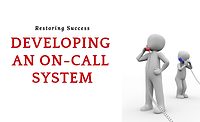- Establish “on-boarding” as a procedure or process in your organization. It should be formal and in writing. It will be defined and have steps. Allow it to be a tool for you to tell the new person what they should expect once they start their new job and also a guide for the leadership team in your organization.
-
Define the overall objectives on the on-boarding process. For example:
- Make the new person feel comfortable and welcome.
- Give him/her an understanding of our core values.
- Make them aware and have the ability to understand processes, procedures, and policies.
- Give the person the appropriate training.
-
Chart out your current process, then review and improve. Use approximate time spans for the steps and the entire process. In my own organization, the team has decided to use a six month time span to define the period the company will actively “on-board” Here is an example of what a process may look like:
- Get Hired: Compensation and Benefits
-
First Day or Prior:
- Orientation in HR with Supervisor: Policy Manual, Time Sheets, On-Call Team, Uniforms, PPE Bag
- Tour of Building
- Lunch with a team member
-
Within the First 30 Days:
- Fit Test with Training
- Full Day Orientation
- Review Some Policy
- Restoration Basic Training
- 30 DAY Assessment
- 60 Day Assessment
-
Within the First 60 Days:
- Establish a training plan
-
Training:
- Classes and Field
- Mechanisms for planning and verifying the training process based on various positions.
- What is included in your orientation?
- What are you expecting of various people with various backgrounds through process?






Report Abusive Comment